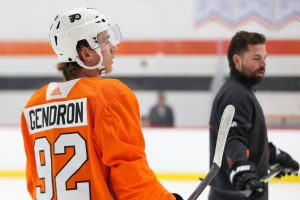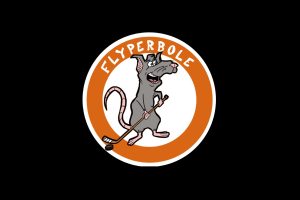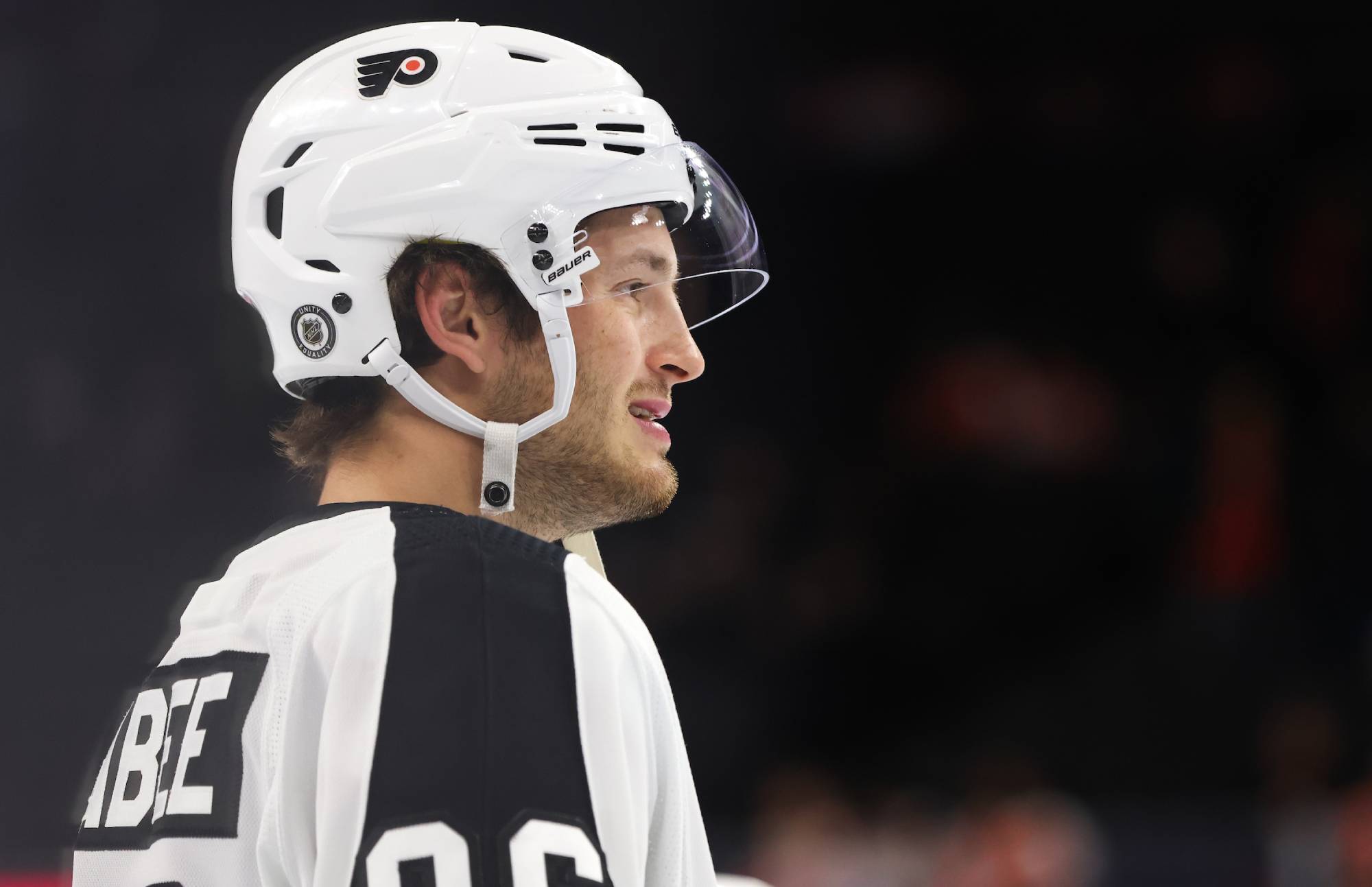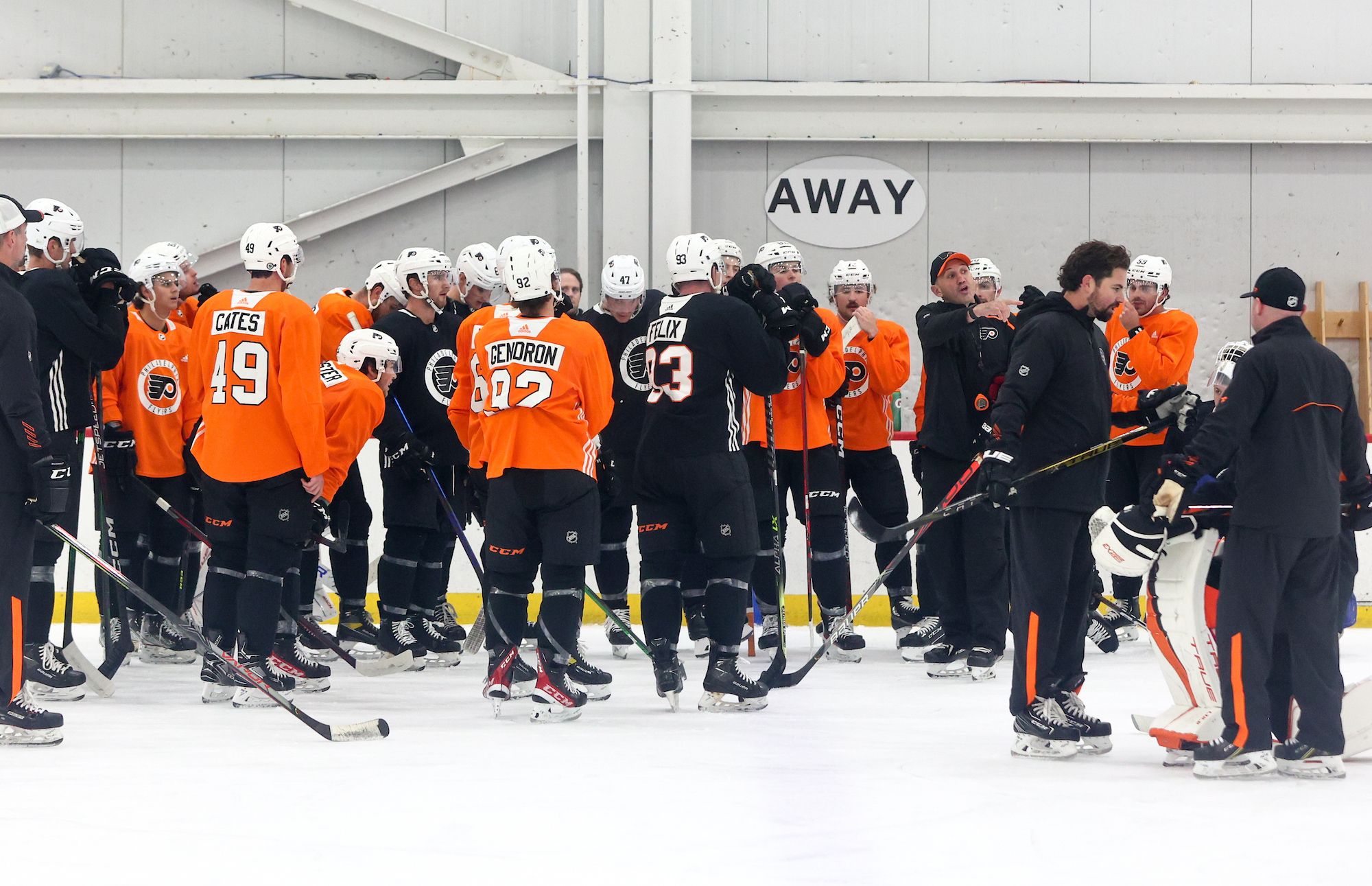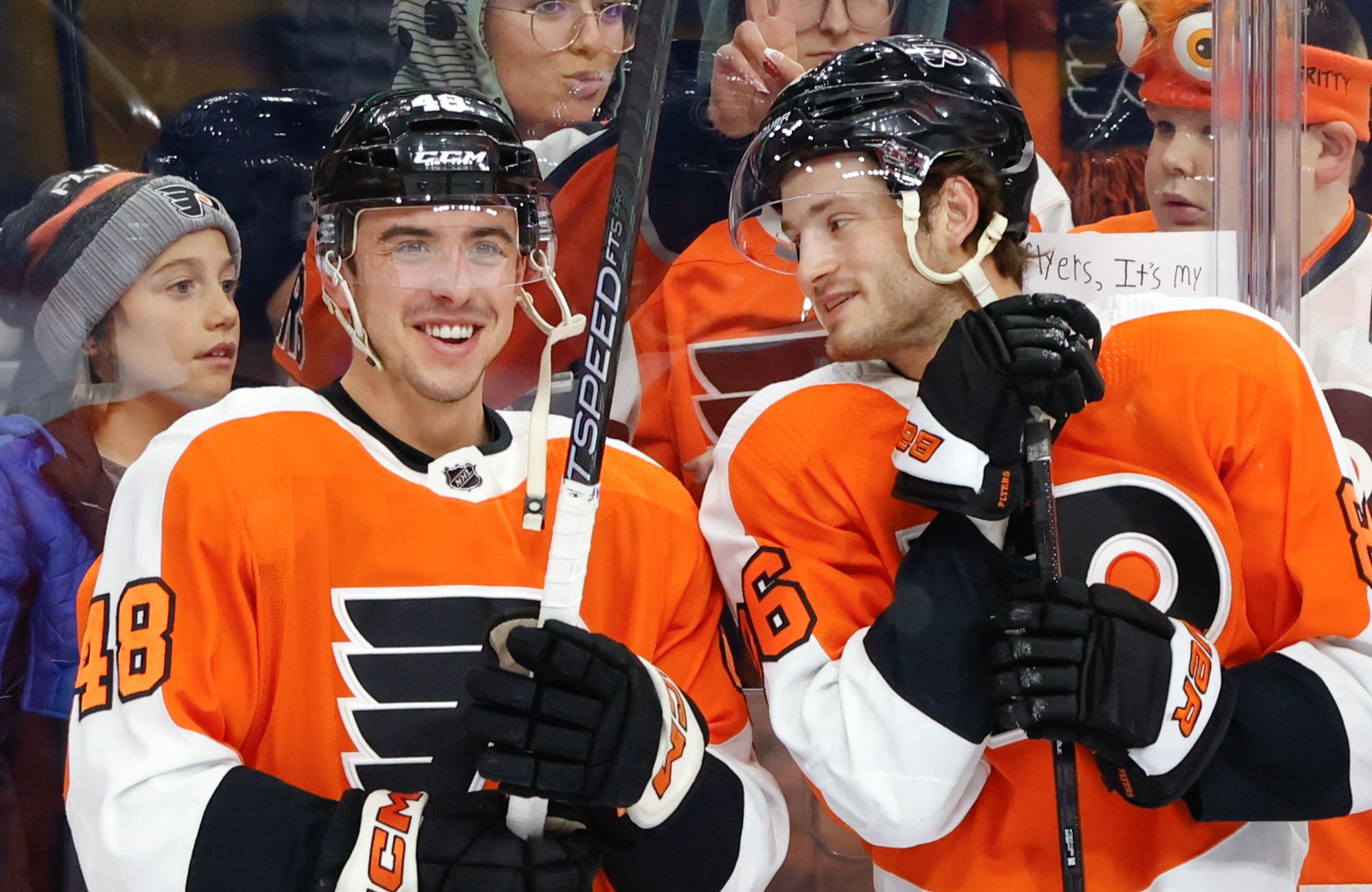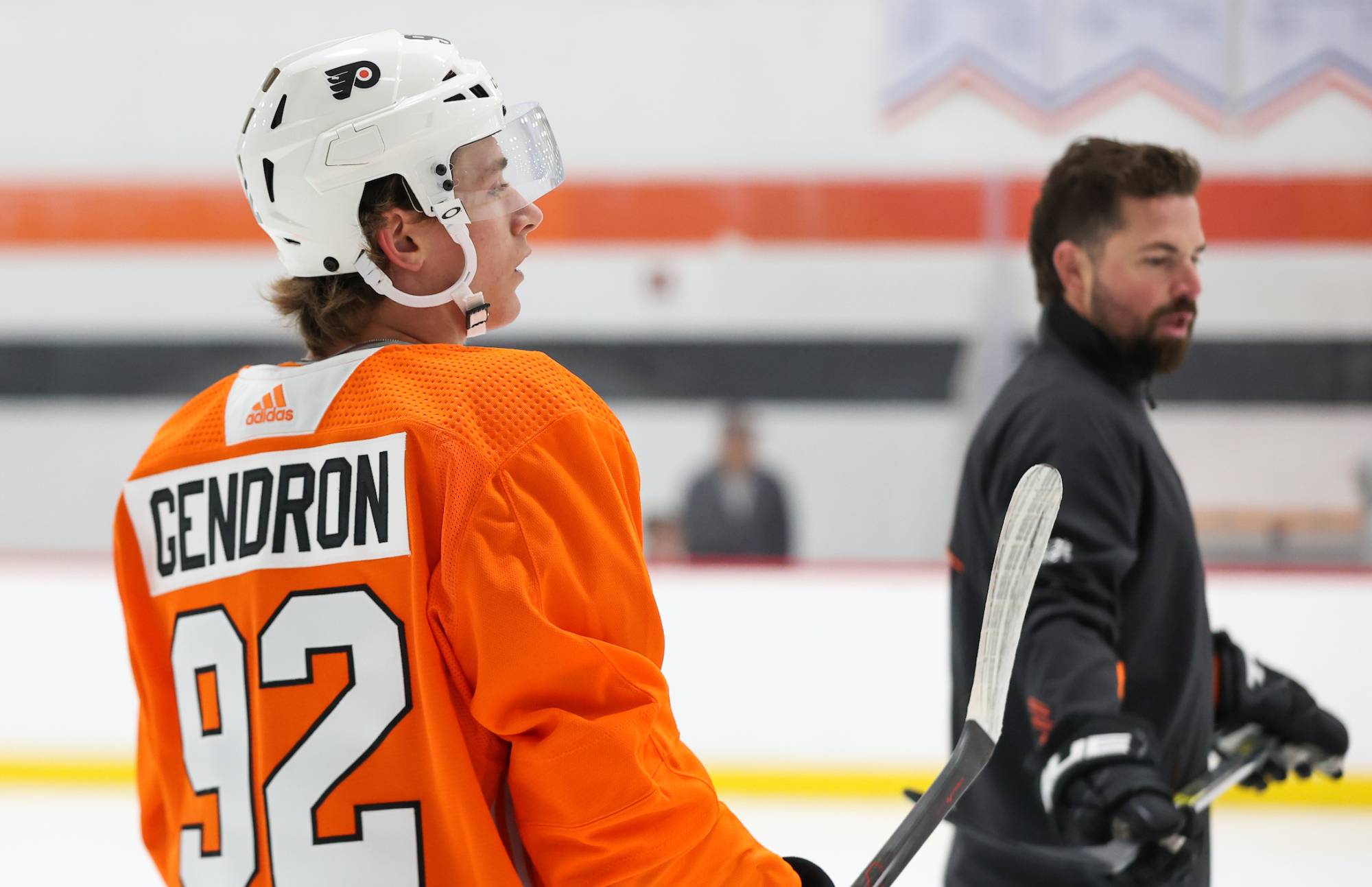Morning Observations is a feature where we break down the previous night’s game with an analytical eye.
#1: Best 5v5 game from the Flyers in weeks
It’s no secret that the Philadelphia Flyers haven’t been playing their best hockey lately, which their recent five-game skid served to illuminate. But even during the team’s ten-game win streak, the team generally wasn’t carrying play. In fact, they actually lost the shot attempts battle at 5v5 over the course of that run, posting a 48.04% score-adjusted Corsi. It’s not like they were thoroughly dominating the opposition on a nightly basis; they were winning because of great goaltending, an elite power play and elevated shooting percentages. And that’s fine in the short-term, but as the recent losing streak has proved, it might not be the most sustainable formula for success.
Yesterday, however, the Flyers simply outplayed their opponent. Even though they fell behind early in the contest, Philadelphia had the edge in the territorial battle from the start, and ended up winning the all-situations shots on goal battle 44-26. A good portion of that was driven by an edge in 5-on-5 play, where the Flyers posted a strong 54.07% score-adjusted Corsi and led in both regular (29-16) and high-danger scoring chances (10-7). It was a complete performance.
In fact, the last time the Flyers posted a score-adjusted Corsi over 54% and also came away with the victory was way back on December 3rd against the Chicago Blackhawks, and in that game, the Blackhawks had in the edge in scoring chances. In my opinion, you have to go all the way back to the victory over the Flames back in late November to find a game that saw Philadelphia so thoroughly dominate their opponent and also get the win.
#2: Flyers seem to have strong 5v5 games against Tampa Bay
The Lightning team that the Flyers faced yesterday was far from being at full strength. Steven Stamkos remains out, Ben Bishop is injured, and Braydon Coburn missed the game as well. However, Philadelphia has made a habit of outplaying even strong Tampa Bay teams, particularly since Dave Hakstol has taken over as the Flyers’ head coach. In six games against the Lightning since 2015-16, Philadelphia has a 54.94% score-adjusted Corsi and has won the scoring chance battle in four out of the six games. They had maybe their strongest 5v5 game of the season last year against Tampa in March (a season-high 76 shot attempts), and also carried play back in November of this year, only to fall 3-0 due to a stellar game from Andrei Vasilevskiy. Regardless, the Flyers have had little trouble at 5v5 against the Lightning recently.
Still, we’re only talking about six games here. There is always the possibility that it’s just a small sample size-induced fluke, though I’m starting to think otherwise. The Flyers always seem to own the neutral zone against the Lightning, clogging up passing lanes while easily finding ones of their own. The “Flyers are a bad matchup for Tampa” theory is supported by the fact that the two worst play-driving defensemen on the Lightning yesterday were Anton Stralman and Viktor Hedman, obviously both elite blueliners. Tampa has some roster flaws right now, but if that was the only reason the Flyers dominated, you’d think that they would have feasted on the weaker defensive pairs. Instead, Philadelphia took it to their best guys, hinting at a possible deeper issue.
NHL.com Report & Highlights | Corsica.Hockey Game Recap Page | HockeyStats.ca Recap | NaturalStatTrick Recap | HockeyViz.com | BSH Recap | Meltzer’s Musings
#3: New Giroux line solid
It wasn’t a shock to see Dave Hakstol juggle the Flyers’ line combinations in the wake of an ugly loss to the Rangers on Wednesday. But the new-look top line was a bit of a surprise. Michael Raffl stayed up with Claude Giroux, but Matt Read was the forward who replaced Jakub Voracek on the right. Read got off to a hot scoring start this year, but eventually settled back into his usual role as a defense-first winger prior to his abdominal injury that put him on the shelf for a month. He’s clearly a useful player, but not an obvious choice for a stint on the top line.
Read is a stellar puck possession player, though, specifically due to his plus play in the neutral zone. Combine that with Raffl’s always strong play-driving, and it gave the top line two of the best Corsi players on the team. The real question was whether the trio could score. Yesterday, they did just that, as Raffl blasted a one-timer past Vasilevskiy in the second period courtesy of a Giroux feed, helping to justify the coach’s decision. As for the underlying metrics, the line did drive play for the most part (Raffl and Read both finished with Corsi percentages over 55%), though they did get pinned in their own zone a few times late in the game. On the whole, however, the first line experiment appeared to work.
#4: Tampa isn’t the old Tampa
It seems like the Flyers under Hakstol may be a bad stylistic matchup for the Lightning, but it’s also fair to note that this Tampa Bay team is a far cry from the Cup contender squads of recent past. They’re currently out of a playoff spot, and that isn’t a big surprise when you look at their underlying metrics. Tampa ranks 21st in the league with a 49.27% score-adjusted Corsi percentage, and their shot quality metrics fall closely in line with that as well. Even a much-improved power play hasn’t been enough to outweigh their legitimate issues.
So what’s the problem in Tampa? The forward corps still looks strong on paper, even with Stamkos injured. The bigger issue has been the defense, which frankly falls off a cliff after Hedman and Stralman. Former Flyer Braydon Coburn (who missed yesterday’s game) has been solid, but Jason Garrison has regressed with age, Slater Koekkoek hasn’t developed like they hoped, and Andrej Sustr simply isn’t very good. The Flyers were in this same position a few years ago — good forwards but a bad defense past the top guys — and it turned them into a bubble playoff team. That issue is doing the same to a Lightning squad that appeared to be a championship favorite in October.
#5: Fourth line was atrocious
The minute that it became clear that Boyd Gordon would be starting in place of Roman Lyubimov, it was obvious that Dave Hakstol would be leaning heavily upon his top three lines in this game. After all, in his 12 games played prior to yesterday, Gordon received more than seven minutes of 5v5 ice time just twice. Basically, whenever Boyd Gordon plays on the fourth line, it’s rarely used during 5-on-5 situations, and yesterday was no different. But even with Gordon, Chris VandeVelde and Pierre-Edouard Bellemare getting far less minutes than their teammates, they found a way to hurt the team dramatically.
In a game that saw the Flyers carry play basically from start to finish, each member of the fourth line finished with score-adjusted Corsi For percentages below 27%. They also were on the ice for Tampa Bay’s first goal, which was maybe the only shift in the first period where the Flyers didn’t totally take the play to the Lightning. The truly frustrating part is that “fixing” this line really wouldn’t be that hard.
For starters, Roman Lyubimov should never leave the lineup when healthy and capable of playing hockey. He’s a great forechecker and has a positive Corsi For% RelTM, meaning that his teammates drive play better with him than away from him. I’m not going to pile on Chris VandeVelde too much, because he’s actually delivered decent results this year, but using Scott Laughton or Taylor Leier as the 4LW would certainly be a talent upgrade. And then there’s Bellemare, who supposedly “can play up [in the lineup] if we need him to” even though he has a whopping four points in 41 games. It’s a positive that the line’s minutes have been cut dramatically since Couturier returned from injury, but they can still do damage even in limited time.
#6: Gostisbehere struggled again
I’ve been a vocal defender of Shayne Gostisbehere this season, even as he’s received criticism both from fans wanting a repeat of his magical rookie year, and writers who feel his defensive game has regressed. All of Ghost’s 5v5 play-driving metrics remain stellar, however, and have actually improved from last season. But Gostisbehere certainly is capable of delivering poor performances, and yesterday was legitimately one of those times.
Aside from the fourth line trio, Gostisbehere was the only Flyers’ player to post a score-adjusted Corsi below 40 percent, and the eye test matched the stats. Ghost struggled with turnovers, and his positioning and decision-making was off as well. Looking at the tape, I believe the Lightning’s first goal was mostly on Gostisbehere, as he pinched way up in the neutral zone and did not recognize that Vladislav Namestnikov was sneaking up the right side of the ice, giving Tampa Bay a 2-on-1 edge if they could successfully execute a pass across the red line, as they did. Ghost also struggled on Wednesday with turnovers, even if his play-driving metrics were solid. I don’t think this is any time to panic, but the dynamic defenseman is legitimately going through a bit of a rough patch right now.
#7: Radko Gudas, on the other hand, was stellar
It’s crazy to think that just two seasons ago, Radko Gudas was basically just a throw-in piece in the trade that brought Braydon Coburn to Tampa Bay. Since then, the burly defenseman has not only righted the ship, he’s turned into his team’s most reliable all-around defenseman. Yesterday, you could make a strong case that Gudas was the best player on the ice for both squads. Gudas scored a goal, generated five shots on Vasilevskiy, and led the Flyers both in minutes (24:35) and in score-adjusted Corsi at 69.39%. He was a monster.
His skillset remains unorthodox, especially for a blueliner who delivers such positive results. In some ways, he’s a throwback defenseman in that he’s straight up mean on the ice, and has earned a reputation (not unwarranted) for dirtiness. He also blocks lots of shots and racks up tons of hits. But he’s a high-volume shooter, and is somehow a plus player in the neutral zone despite not being especially strong in rush coverage. His goal helped to explain why that is the case. Jason Garrison attempted a long pass to a waiting teammate in the neutral zone, and Gudas alertly stepped in, intercepted it, and then engineered a rush back up ice. I believe it’s those aggressive instincts in the middle of the ice that make him such an effective defenseman, more than anything else.
#8: Weise helped the new-look third line work
Dale Weise was been a major disappointment for the Philadelphia Flyers in his first season with the team. Through the first half, Weise has just four points (two goals, two assists) and not even strong play-driving metrics can totally make up for his complete ineffectiveness in the offensive zone. When Hakstol shook up the lines this week, it seemed possible than Weise could leave the lineup in favor of Nick Cousins, who shared time on the third line in practice with Weise, Brayden Schenn and Wayne Simmonds. Obviously the latter two aren’t sitting, so it seemed clear that Weise was battling for that final spot with Cousins.
Though Weise (again) didn’t contribute on the scoresheet, he was a big reason why the new Schenn worked so well yesterday. We don’t have the manually tracked data yet, but to my eyes it looked like Weise was a controlled entry machine against the Lightning, especially early on. He even sprung Nick Schultz(!) for a breakaway at one point. We know that entries with possession tend to drive more shots than dump-ins, so it’s not surprising that the Weise-Schenn-Simmonds line dominated in terms of attempt differential, as all three forwards finished with Corsis over 59%. It’s just one game, but that line showcased real potential, using brute strength to excel in the game but possessing enough neutral zone skill to enter the attacking third of the ice with control of the puck.
#9: Provorov had a great game, still didn’t drive play
It was impossible to watch yesterday’s game and not come away impressed with Ivan Provorov. Every aspect of his game was on display — shot creation, entry defense, poise with the puck in the defensive zone. He even added a well-earned assist on Sean Couturier’s goal, which was only possible because of Provorov’s quick, low shot from the point that created a rebound. Yet somehow, the play-driving metrics didn’t match the quality of Provorov’s performance. He finished with a 48.14% score-adjusted Corsi, -12.19% relative to his teammates.
The only explanation that makes sense to me given the disparity because Provorov’s apparent stellar game and the fact that the Flyers were outshot while he was on the ice is the quality of his defensive partner. Andrew MacDonald remains joined at the hip to Provorov, and he was his usual “passive in the neutral zone, indecisive with the puck” self. Frankly, I’m starting to worry that this pairing simply won’t be broken up. This past week, the duo finally faced some goal prevention regression, as teams began to score with the Provorov-MacDonald pairing on the ice to match the horrific play-driving metrics (43.0% Corsi For together). But that didn’t result in Hakstol trying something new, even as he shook up all the forward lines. Maybe things change after Mark Streit is back, but I’m starting to worry that the Flyers coaching staff is falling in love with a pairing that all of the metrics hint is not going to work over the long-term.
#10: Couturier line is just a good idea
Over the first month of the season, the “second” line of Travis Konecny, Sean Couturier and Jakub Voracek really was the team’s top unit. Despite some occasional defensive hiccups, no line was more threatening to the opposition on a nightly basis, unsurprising considering it consisted of the team’s best play-driving center flanked by the two most dynamic wingers on the roster. But even before Couturier went down to injury, the unit was broken up, ostensibly to use Voracek to help get Claude Giroux and the top line going.
Yesterday saw the reunion of the old Couturier line, though, and they picked up right where they left off. They scored the Flyers’ first two goals of the game, while also driving play. The unit isn’t a true possession juggernaut, though it is solid (53% Corsi For in 207.29 minutes at 5v5). It’s the offensive creativity that really shines through, as they can score on the cycle (as Couturier did) or in transition (like Konecny). Opponents can’t let up for a second, because this trio will make them pay. It’s good to have them back.



